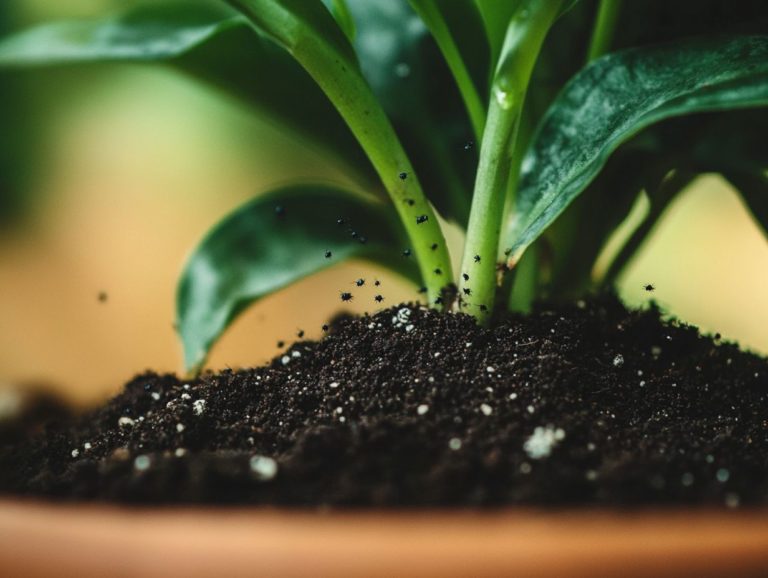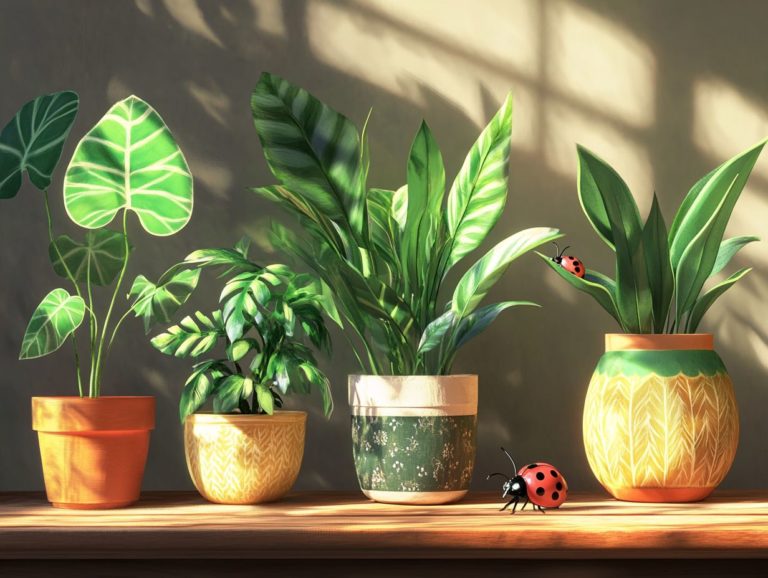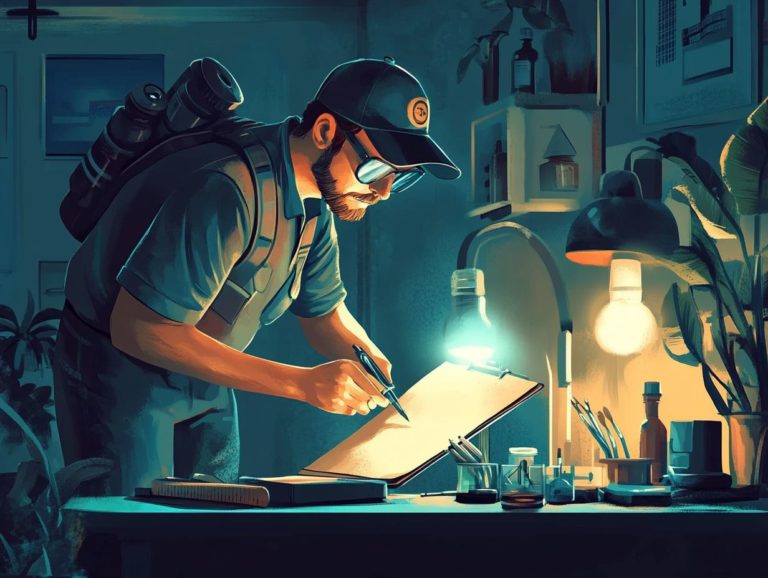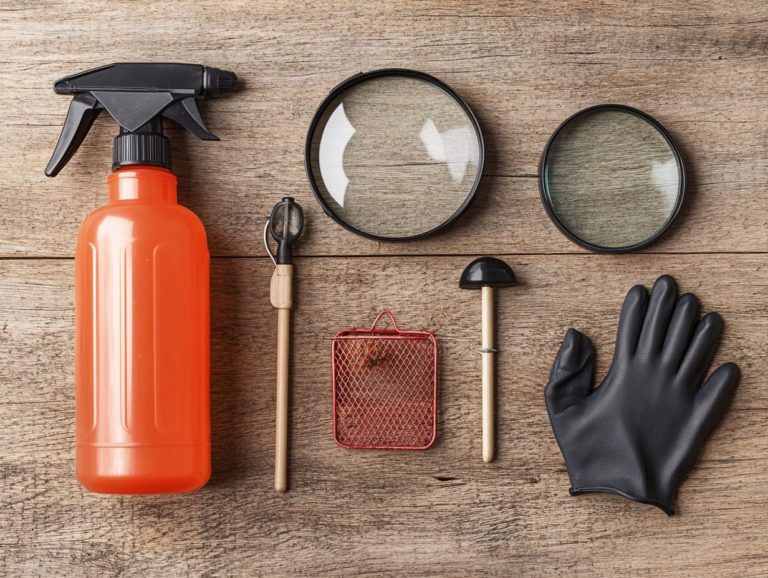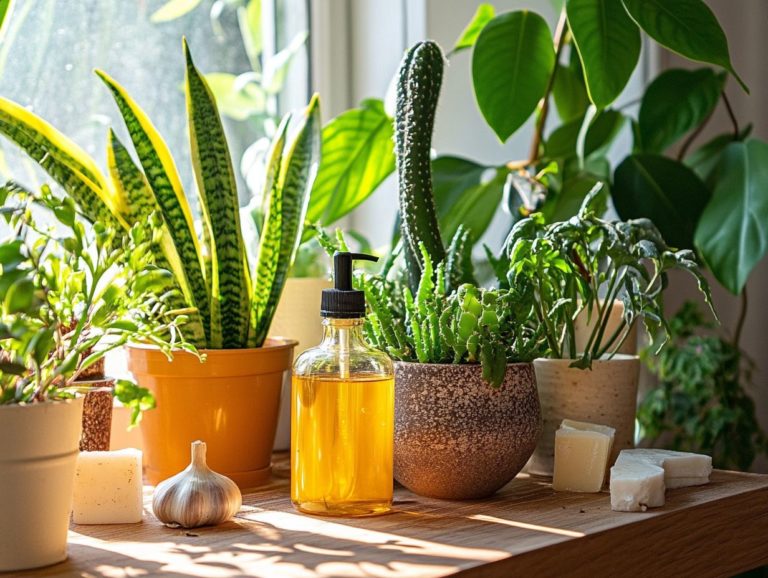The Importance of Monitoring Your Indoor Plants
Keeping an eye on your indoor plants is essential for their health! Regular check-ups help you spot problems before they become serious. This article will explore the many benefits of consistent monitoring, guide you in recognizing signs of distress in your plants, and outline the essential tools you’ll need.
You ll find a step-by-step guide designed to help you effectively monitor your plants, along with valuable tips for preventing common problems. With the right approach, you can cultivate a flourishing indoor garden that transforms your living space into a vibrant oasis!
Contents
- Key Takeaways:
- Why Monitor Indoor Plants?
- Signs of Unhealthy Indoor Plants
- Tools for Monitoring Indoor Plants
- How to Monitor Indoor Plants
- Preventing and Addressing Plant Problems
- Frequently Asked Questions
- What is the importance of monitoring indoor plants?
- How often should I monitor my indoor plants?
- What should I look for when monitoring my indoor plants?
- Why is it important to maintain a consistent watering schedule for indoor plants?
- What are the benefits of monitoring indoor plants?
- Can monitoring indoor plants help prevent plant diseases and improve humidity monitoring?
Key Takeaways:
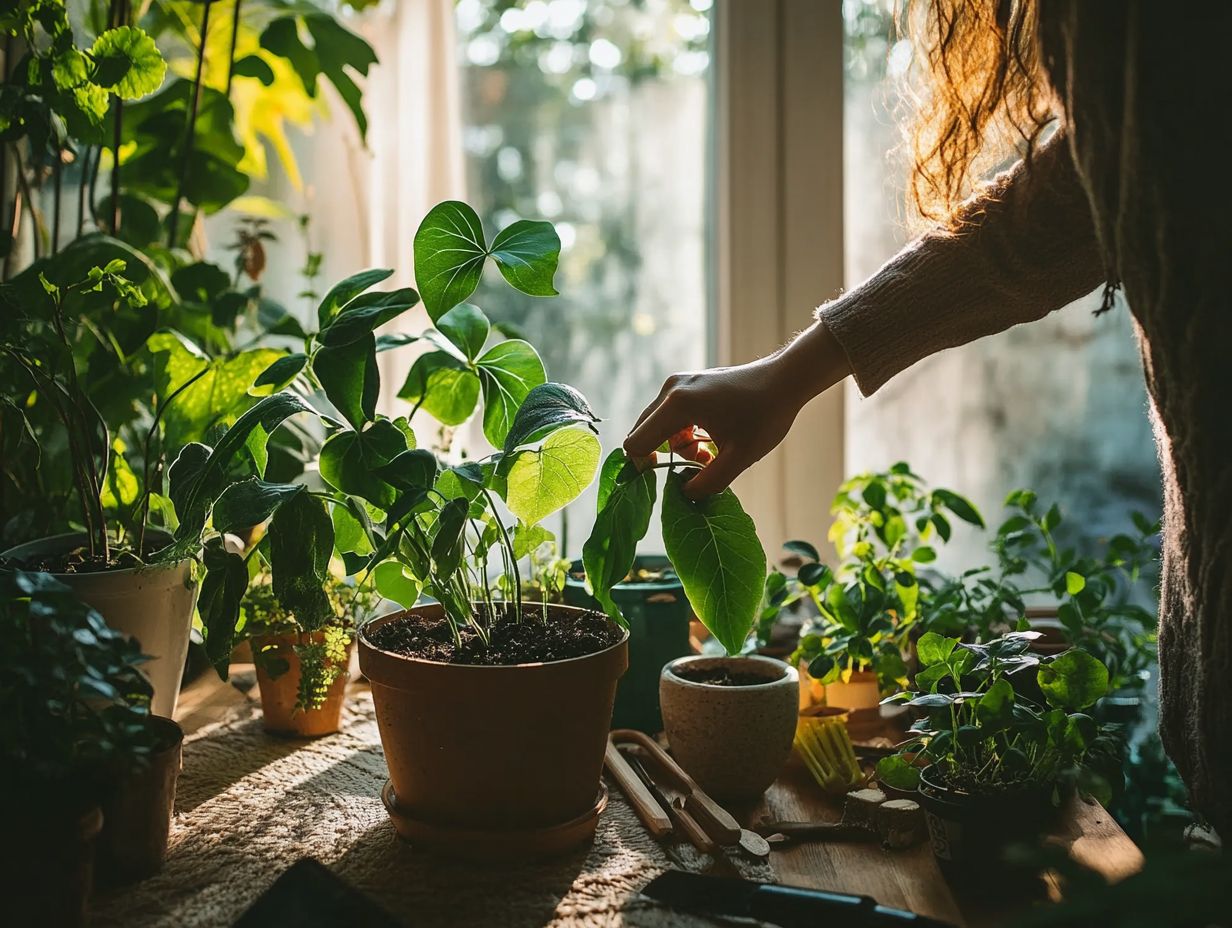
- Regular monitoring is crucial for the health of your indoor plants, as it helps prevent and address potential issues before they become serious problems.
- Familiarize yourself with the signs of unhealthy plants, such as wilting, discoloration, and pest infestations, to catch and address problems early on.
- Essential tools for monitoring indoor plants include a watering gauge, pH meter, and magnifying glass to check for pests. Stay diligent and proactive in maintaining healthy plants.
Why Monitor Indoor Plants?
Monitoring your indoor plants is essential for fostering optimal growth and ensuring their health in diverse environmental conditions. By embracing the latest advancements in agricultural automation and utilizing tools to keep tabs on electrical conductivity (EC), humidity, and temperature, you can create the perfect home for your plants!
This meticulous attention not only invigorates your plants but also enhances water conservation and nutrient management, resulting in healthier and more vibrant greenery.
As you explore the importance of monitoring, grasp the intricacies of plant care and the pivotal role technology plays in nurturing plant growth.
Benefits of Regular Monitoring
Regularly monitoring your indoor plants is key to ensuring they thrive. It helps maintain an optimal growing environment and addresses any potential issues before they escalate.
By leveraging remote monitoring tools, you can gain valuable insights into factors such as soil moisture levels, light exposure, and ambient temperature. This allows you to create a precise care regimen tailored to each plant’s specific needs. Understanding the importance of soil testing for houseplants enhances plant health through timely interventions and promotes efficient resource use! For example, you can water your plants only when necessary, conserving this vital resource.
Frequent monitoring can boost growth rates, allowing you to enjoy a lush, vibrant indoor garden in less time. Integrating technology into your plant care routine, along with understanding the science of watering indoor plants, maximizes the potential for a thriving, healthy indoor oasis.
Signs of Unhealthy Indoor Plants
Recognizing the signs of unhealthy indoor plants is essential for prompt intervention and the revival of plant vitality! Consider the effects of environmental factors like humidity and nutrient availability, as they play a significant role in your plants’ overall well-being.
Identifying Common Issues
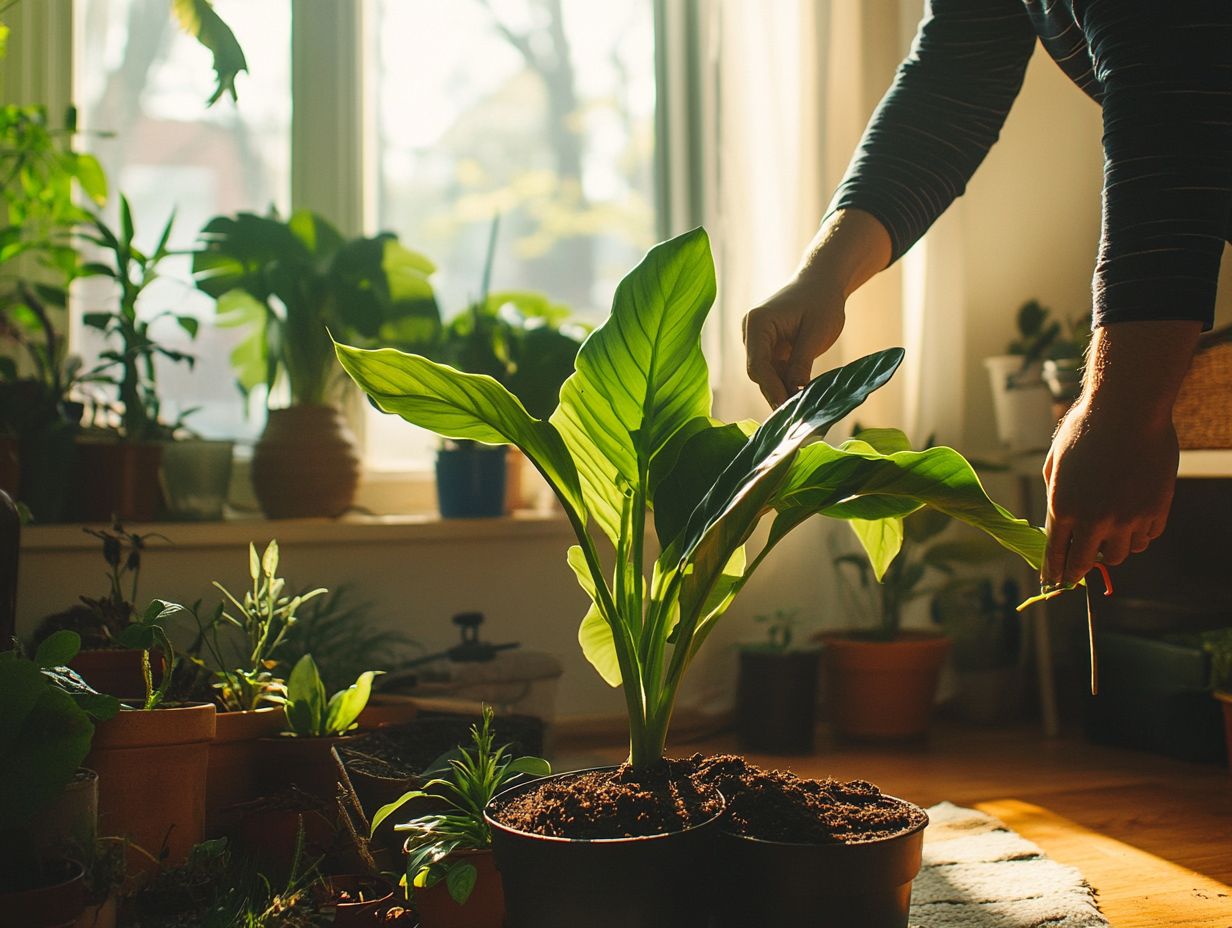
Identifying common issues in your indoor plants starts with understanding their fundamental needs. Recognizing the early signs of distress is essential, particularly since many indoor plants can experience nutrient deficiencies linked to suboptimal soil quality or insufficient fertilization.
Poor air quality can exacerbate these problems, resulting in stunted growth or inviting pest infestations. By closely monitoring electrical conductivity (EC) and other environmental factors like humidity and light levels, you can achieve a more accurate diagnosis of your plants health.
Early detection through these metrics not only boosts the vitality of your plants but also allows you to create a tailored care regimen that meets each species’ unique requirements!
Tools for Monitoring Indoor Plants
You have access to a diverse array of tools specifically crafted for monitoring indoor plants. Each tool is designed to enhance the growing environment and ensure the health of your plants by meticulously tracking essential factors.
Essential Equipment and Supplies
The essential equipment and supplies for monitoring your indoor plants include advanced plant sensors, automated solutions, and effective lighting systems, such as RGB LEDs, to optimize growth conditions.
These tools are vital for creating the ideal environment in your greenhouse. They ensure factors like temperature, humidity, and soil moisture stay within optimal ranges. Advanced plant sensors continuously track environmental parameters, providing you with real-time data to make informed decisions.
Automated irrigation systems help you avoid overwatering or underwatering, promoting robust root development and overall plant health.
Effective lighting systems, especially energy-efficient LEDs, mimic natural sunlight and can be tailored to meet the specific light spectrum needs of different plants, further boosting their growth. Together, these essential tools play a significant role in sustaining plant vitality and maximizing productivity.
How to Monitor Indoor Plants
Monitoring indoor plants effectively requires an organized method that covers various aspects of plant care. This includes real-time data collection and thorough analysis of environmental factors.
By following this approach, you can ensure your plants thrive in their indoor environment.
Step-by-Step Guide
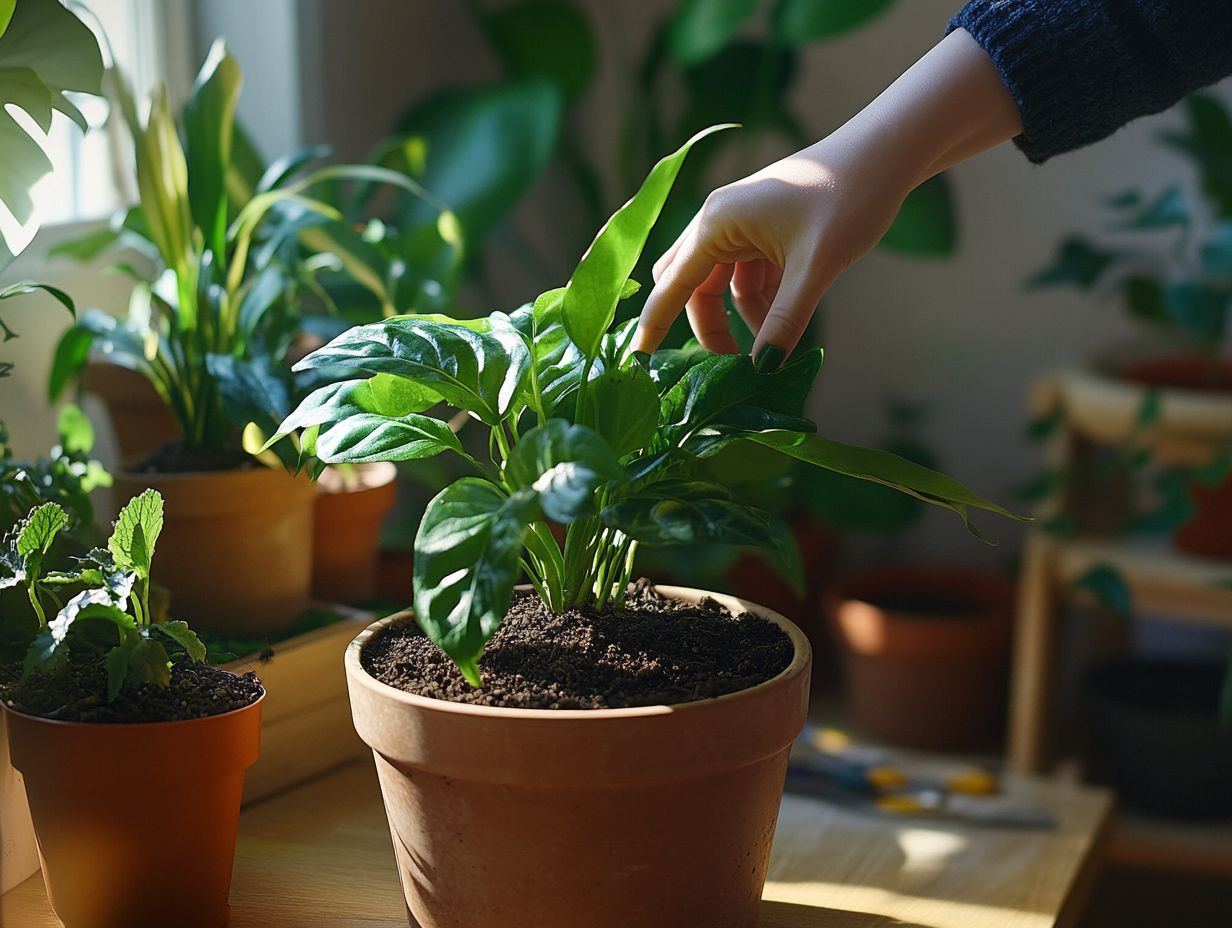
Following a structured, step-by-step guide for monitoring your indoor plants ensures that all critical factors, such as temperature control and soil moisture, are properly addressed.
This method enhances your plants’ overall health while cultivating a flourishing indoor garden environment.
Start by using a soil moisture meter to get precise readings of the soil’s hydration levels. This helps you avoid overwatering or underwatering, which are common challenges for indoor gardeners.
Implementing a temperature control system is essential. It allows you to adjust conditions based on seasonal changes, ensuring your plants stay within their ideal temperature range. Additionally, understanding why soil quality matters for indoor plants will help you make informed decisions, leading to healthier growth and greater resilience against pests.
Preventing and Addressing Plant Problems
Preventing and addressing plant problems is the best strategy for maintaining vibrant indoor plants. By focusing on timely management of humidity, temperature, and nutrient levels, you can create an environment that promotes optimal health and flourishing growth.
Tips for Maintaining Healthy Plants and Ensuring Optimal Air Quality
Maintaining healthy plants relies on your commitment to consistent care practices and a solid understanding of environmental control, including effective water conservation strategies and the use of real-time data.
For instance, using a moisture meter helps you determine exactly when to water, preventing soil over-saturation. Be sure to adjust your plants placement to ensure they receive optimal light while protecting them from harsh, direct sunlight.
Regularly monitoring humidity and temperature with a hygrometer (a tool that measures humidity) and thermometer provides valuable insights. This enables you to fine-tune airflow and heating to create an ideal indoor environment for growth.
Incorporating these techniques enhances plant vitality and deepens your connection with indoor gardening, turning it into a rewarding and enjoyable experience while improving your understanding of ecological balance.
Frequently Asked Questions
What is the importance of monitoring indoor plants?
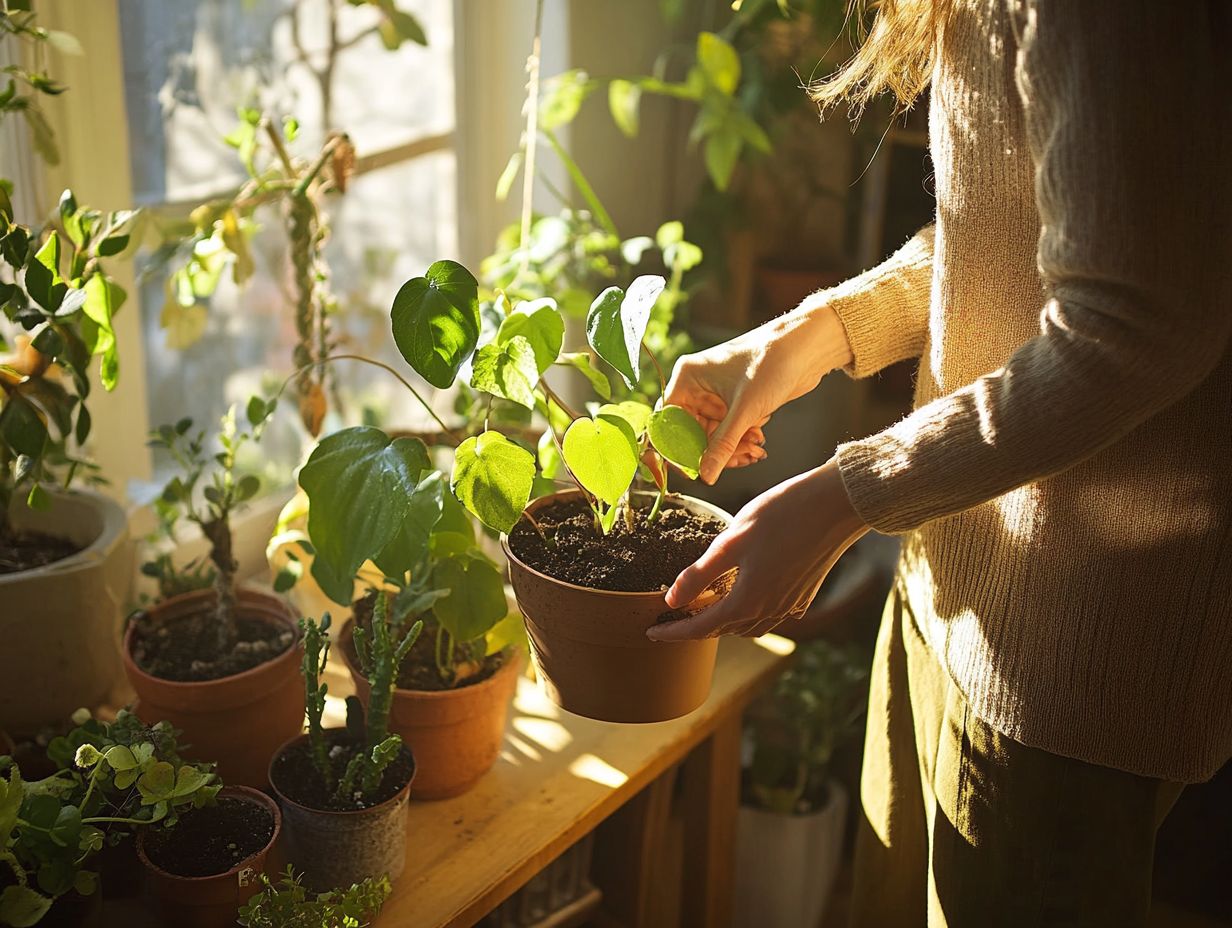
Monitoring indoor plants is vital for their health. It promotes efficient resource use and sustainable practices, allowing you to catch potential issues early and maintain the well-being of your plants.
How often should I monitor my indoor plants?
Check your indoor plants at least once a week. Adjust this based on the plant species and their specific needs.
What should I look for when monitoring my indoor plants?
When you monitor your indoor plants, watch for changes in appearance like wilting leaves, discoloration, or pests. Also, check how wet the soil is and ensure your plants get enough sunlight.
Why is it important to maintain a consistent watering schedule for indoor plants?
A consistent watering schedule is crucial for your indoor plants. It ensures they receive the right amount of water at the right time, supporting their overall vitality. Too much or too little water can cause problems like root rot or dehydration.
What are the benefits of monitoring indoor plants?
Monitoring your plants helps you spot and fix issues early. This way, you can enjoy healthy growth and vibrant foliage!
Can monitoring indoor plants help prevent plant diseases and improve humidity monitoring?
Yes, monitoring your indoor plants helps prevent diseases. By regularly checking for signs of pests or diseases, you can take swift action to treat issues and stop them from spreading to other plants.

